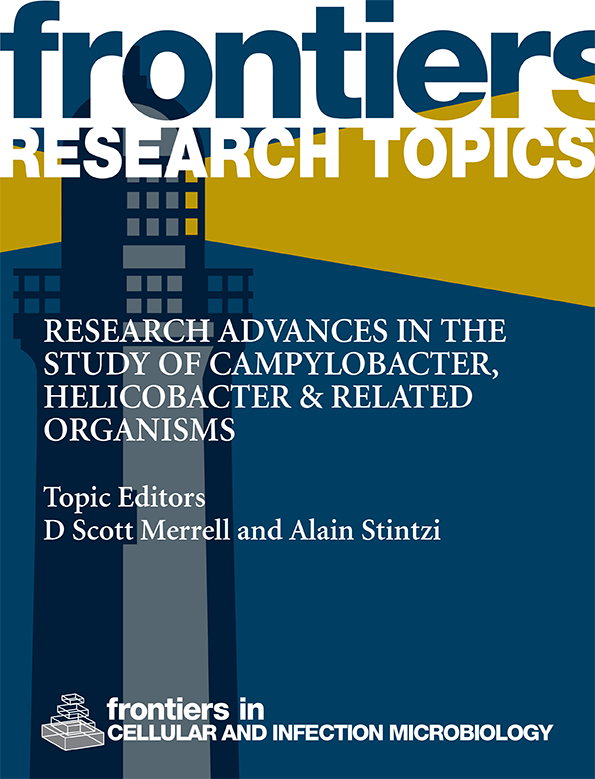儿科患者中呼吸道合胞病毒和人类偏肺病毒感染流行病学模式的变化及其与重症病例的相关性:一项长期回顾性研究
IF 4.6
2区 医学
Q2 IMMUNOLOGY
Frontiers in Cellular and Infection Microbiology
Pub Date : 2024-09-02
DOI:10.3389/fcimb.2024.1435294
引用次数: 0
摘要
目的我们旨在调查COVID-19大流行前后华南地区急性呼吸道疾病(ARTI)儿科患者中呼吸道合胞病毒(RSV)和人偏肺病毒(hMPV)的流行情况,并确定严重感染的相关风险因素。方法本研究对2012年至2023年住院的ARTI患儿进行了实时PCR分析,特别针对RSV、hMPV和其他呼吸道病原体进行了分析。结果RSV每三年流行一次,同样,hMPV爆发的时间模式也与RSV相似。在实施 COVID-19 流行病防控措施期间和之后,RSV 和 hMPV 的感染率达到高峰。RSV 感染率在 2022 年出现双峰,而 hMPV 则在 COVID-19 大流行后的春季、秋季和冬季出现季节性高峰。COVID-19 爆发后,女性患者和 1 岁及以上患者中出现 ARTI、RSV 感染和 hMPV 感染的比例呈上升趋势。婴儿(OR = 4.767,95%CI:[3.888-5.846],p <0.0001)、合并感染(OR = 0.540,95%CI:[0.404-0.722],p <0.0001)和存在并发症(OR = 1.582,95%CI:[1.285-1.949],p <0.0001)是 RSV 感染严重程度的风险比。感染 hMPV 的 1 岁以下儿童(OR = 0.322,95%CI:[0.180 - 0.575],pamp &;lt;0.0001)和合并症儿童(OR = 8.809,95%CI:[4.493 - 17.272],pamp &;lt;0.0001)患重症的风险更高。结论不断变化的流行病学模式有可能导致在儿童中广泛爆发严重疫情,尤其是那些有潜在疾病的儿童,他们可能会出现更严重的症状。要为未来的流行病预防和治疗策略奠定坚实的基础,对儿童进行肺炎病毒监测是一项势在必行的措施。本文章由计算机程序翻译,如有差异,请以英文原文为准。
Changes in the epidemiological patterns of respiratory syncytial virus and human metapneumovirus infection among pediatric patients and their correlation with severe cases: a long-term retrospective study
ObjectivesWe aim to investigate the prevalence of respiratory syncytial virus (RSV) and human metapneumovirus (hMPV) among pediatric patients with acute respiratory tract illness (ARTI) in southern China both pre- and post-COVID-19 pandemic, as well as identify associated risk factors for severe infections.MethodsThe study conducted a real-time PCR analysis on hospitalized children with ARTI from 2012 to 2023, specifically targeting RSV, hMPV, and other respiratory pathogens. Additionally, demographic data was collected during this analysis.ResultsThe prevalence of RSV occurs triennially, and likewise, the temporal pattern of hMPV outbreaks mirrors that of RSV. The peak infection rates of RSV and hMPV occurred during and following the implementation of COVID-19 epidemic prevention and control measures. The incidence of RSV infection exhibited bimodal peaks in 2022, while hMPV demonstrated seasonal peaks during the spring, fall, and winter periods post-COVID-19 pandemic. After the COVID-19 outbreak, there has been an upward trend in the proportion of female patients and patients aged one year and older presenting with ARTI, RSV infections, and hMPV infections. Infant (OR = 4.767, 95%CI: [3.888–5.846], p < 0.0001), presence of co-infection (OR = 0.540, 95%CI: [0.404–0.722], p < 0.0001), and existence of comorbidities (OR = 1.582, 95%CI: [1.285–1.949], p < 0.0001) was the risk ratio for the severity of RSV infection. Children infected with hMPV under the age of 1 year (OR = 0.322, 95%CI: [0.180 – 0.575], p < 0.0001), as well as those with comorbidities (OR = 8.809, 95%CI: [4.493 – 17.272], p < 0.0001), have a higher risk of developing severe illness.ConclusionThe changing epidemiological patterns have the potential to lead to widespread severe outbreaks among children, particularly those with underlying medical conditions who may experience more severe symptoms. Conducting surveillance for pneumoviridae viruses in children is an imperative measure to establish a robust foundation for future epidemic prevention and treatment strategies.
求助全文
通过发布文献求助,成功后即可免费获取论文全文。
去求助
来源期刊

Frontiers in Cellular and Infection Microbiology
IMMUNOLOGY-MICROBIOLOGY
CiteScore
7.90
自引率
7.00%
发文量
1817
审稿时长
14 weeks
期刊介绍:
Frontiers in Cellular and Infection Microbiology is a leading specialty journal, publishing rigorously peer-reviewed research across all pathogenic microorganisms and their interaction with their hosts. Chief Editor Yousef Abu Kwaik, University of Louisville is supported by an outstanding Editorial Board of international experts. This multidisciplinary open-access journal is at the forefront of disseminating and communicating scientific knowledge and impactful discoveries to researchers, academics, clinicians and the public worldwide.
Frontiers in Cellular and Infection Microbiology includes research on bacteria, fungi, parasites, viruses, endosymbionts, prions and all microbial pathogens as well as the microbiota and its effect on health and disease in various hosts. The research approaches include molecular microbiology, cellular microbiology, gene regulation, proteomics, signal transduction, pathogenic evolution, genomics, structural biology, and virulence factors as well as model hosts. Areas of research to counteract infectious agents by the host include the host innate and adaptive immune responses as well as metabolic restrictions to various pathogenic microorganisms, vaccine design and development against various pathogenic microorganisms, and the mechanisms of antibiotic resistance and its countermeasures.
 求助内容:
求助内容: 应助结果提醒方式:
应助结果提醒方式:


